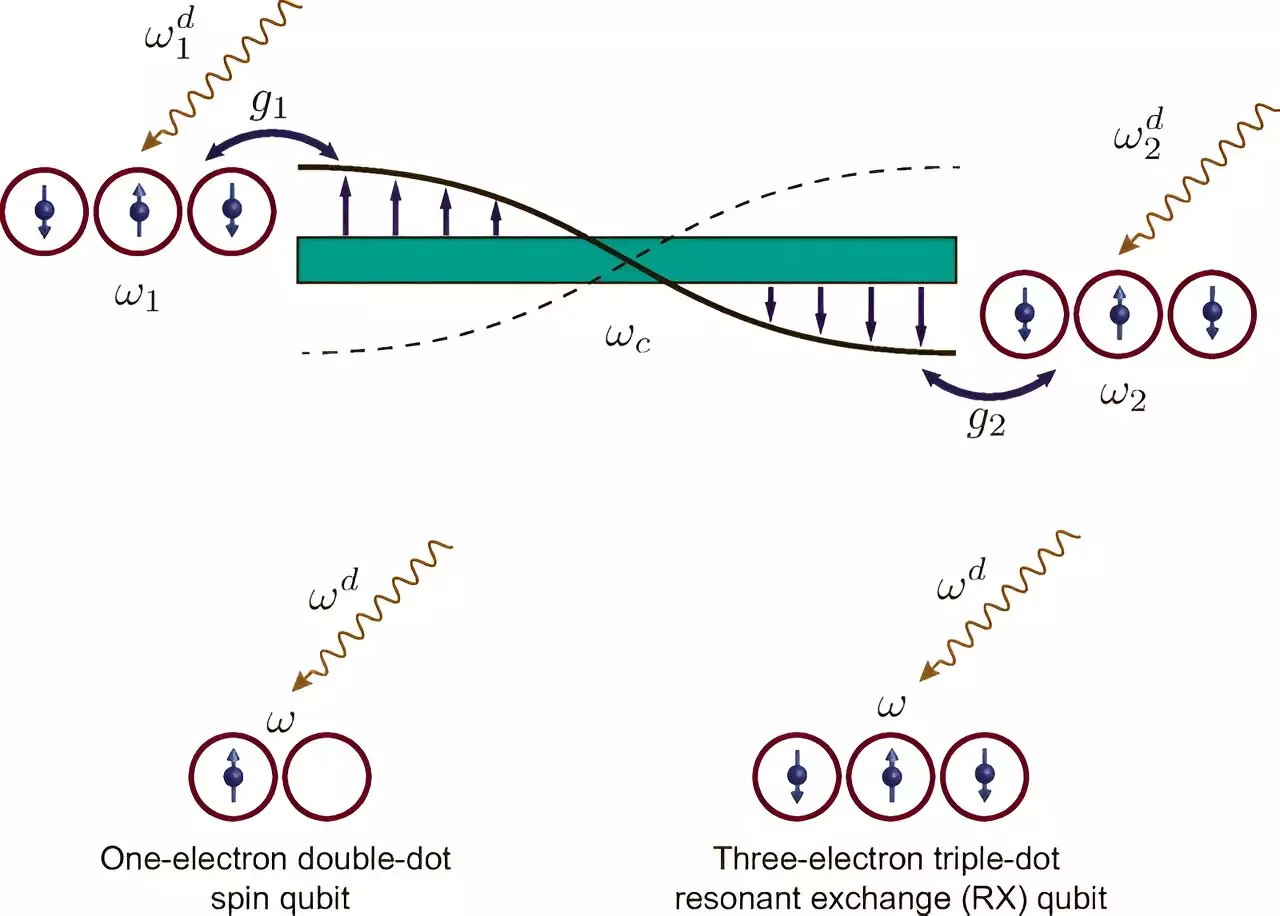Quantum computing stands at the forefront of technological advancement, promising a dramatic shift in how we process information. Unlike classical computers, which utilize binary bits (0s and 1s) to transmit data, quantum computers leverage quantum bits or qubits. These qubits can exist in multiple states simultaneously, allowing for unprecedented computational power. However, the realization of this potential faces significant challenges, primarily in scaling quantum systems to accommodate millions of qubits. A team from the University of Rhode Island proposes a modular framework to address these hurdles, thereby paving the way for more functional and scalable quantum processors.
Quantum bits, or qubits, are the cornerstone of quantum computing, defined by two states derived from quantum systems such as electrons and photons. Unlike traditional binary bits, qubits can embody the principles of superposition, existing in a state of both 0 and 1 concurrently. This unique property of qubits enables quantum computers to perform computations at exponentially faster rates compared to classical supercomputers.
However, achieving these sophisticated computations necessitates not just the presence of numerous qubits but also effective control mechanisms. Every qubit operates at its own specific frequency, which dictates its individual processing ability and interaction with other qubits. As the system scales, the complexities of maintaining distinct frequencies for individual qubits while also enabling their interaction through entanglement becomes increasingly formidable.
Challenges in Scaling Quantum Computers
One of the primary challenges in constructing large-scale quantum computers is the requirement for highly complex electronic systems that manage the control of qubits. Current attempts to create an array of qubits often lead to issues of frequency misalignment, hindering their ability to entangle effectively. Each qubit must not only be controlled on its own but also must be able to engage with its neighboring qubits.
The need for immense and intricate circuitry poses major engineering challenges, making it imperative to devise innovative methods to facilitate qubit connectivity while still ensuring individual operation. The theoretical framework set forth by the research team at URI addresses this dilemma by proposing a modular architecture that attempts to overcome limitations imposed by traditional qubit interactions.
A Modular Architecture for Quantum Processing
The URI team’s approach likens the construction of a quantum processor to assembling a large structure from smaller, interlinked components—much like building with LEGO bricks. The concept involves creating modules, each containing a finite number of qubits, and establishing long-range links between these modules for enhanced performance. This vision not only facilitates scalability but is also grounded in the existing semiconductor technology that permits efficient fabrication of compact qubits.
The proposed method emphasizes flexibility. By introducing oscillating voltages that create additional frequencies for each qubit, the scientists provide a way to entangle multiple qubits without requiring all of them to match their original frequencies. This innovative concept significantly alleviates the challenge of frequency alignment, allowing for a broader range of interactions and more complex entangled operations.
Utilizing Semiconductor Technology for Quantum Innovations
The use of semiconductor technology in constructing quantum processors appears particularly promising due to its advanced capabilities. Current semiconductor technology enables the development of chips containing billions of tiny transistors, which can be fashioned into compact qubits. This suggests that the industry landscape is equipped to support the scalability of quantum systems through modularization.
In particular, linking quantum dot-based spin qubits through the use of microwave photons inside a superconducting cavity exhibits potential for creating robust, entangled connections over extended distances. Recent experiments have illustrated the feasibility of utilizing these links for quantum operations, though the challenge lies in establishing resonant frequencies among multiple qubits—an obstacle the proposed modular system aims to rectify.
The work conducted by Srinivasa and her colleagues marks a significant endeavor towards modular quantum computing paradigms. By presenting practical methodologies for linking qubits through tailored frequencies, the study not only addresses the technical issues of scaling qubits but also enhances the operational versatility of quantum systems.
While fully modular quantum processors are still theoretical, the feasibility of their implementation offers a promising pathway for the next generation of computational technology. As researchers continue to refine these concepts, the dynamic interplay of qubits could lead to a new era of quantum computing that is not only scalable but also efficient and practical for real-world applications.
The proposed modular approach to quantum computing symbolizes a significant leap forward in the quest to unlock the true potential of quantum information processing. With continued research and innovation, the dream of harnessing the immense power of quantum computers may soon become a reality, transforming industries and enhancing our capabilities to solve complex problems in ways previously deemed impossible.

